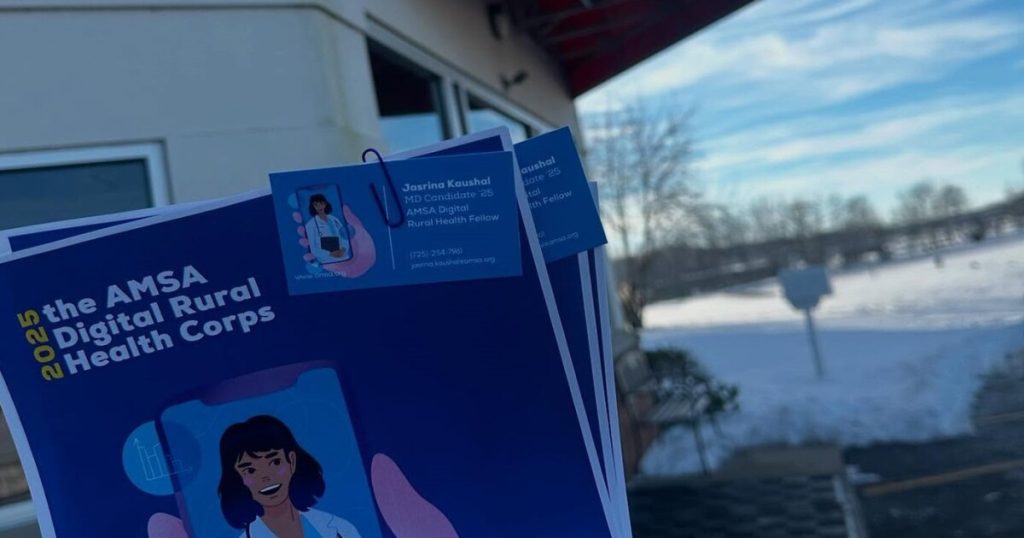Accessing health care in rural Ohio can be difficult. A shortage of providers, worsened by recent hospital closures, means some people have to go long distances to get care. With an older population and inconsistent access to broadband, telehealth is an imperfect solution.
A group of Ohio medical and pre-medical students wants to help bridge the gap by teaching rural residents how to navigate the technology.
The Digital Rural Health Corps is an initiative powered by the American Medical Student Association in partnership with the Ohio Rural Health Association and funding support from the KeyBank Foundation.
It has trained students from schools like Wright State, the University of Cincinnati and Case Western Reserve to provide digital health literacy in places where broadband access is lagging.
“We help the residents of these counties learn how to use digital health tools, like how to access their patient portals, as well as mobile apps and even how to schedule telehealth appointments so they can get the care that they need,” said Rico Carter, a national AMSA leader and a medical student at Wright State University’s Boonshoft School of Medicine in Dayton.
Since launching the initiative about a year ago, the Digital Rural Health Corps has trained over 130 students as digital health navigators and worked with Ohioans across five counties.
What does a ‘Digital Health Navigator’ do?
Gargi Rajput is one of those students.
A first-year medical student at Wright State University, she wanted to get a stronger sense of the challenges patients face in accessing health care.
As a digital health navigator, she went to a Kroger pharmacy in Clinton County, southeast of Dayton, and surveyed shoppers about their experiences and comfort level using online health resources.
“It’s not the digital tools that create access, it’s the people that do. We are the people choosing to understand how we can make digital health powerful.”
Gargi Rajput
“In rural communities, many don’t have broadband access at home or have never used a patient portal,” she said. “Since a lot of healthcare is going digital, we need to address this because a lot of rural residents are being left behind.”
While at the Clinton County pharmacy, Rajput offered people help on the spot, registering them for mobile apps and teaching them how to message their doctors and refill prescriptions from their phone.
“It’s not the digital tools that create access, it’s the people that do,” she said. “We are the people choosing to understand how we can make digital health powerful, and teach more people about ways to navigate and get them more comfortable with all these systems.”
Rural Ohio’s health care need
Rural Ohio has fewer primary physicians, dentists and mental health care providers than the state’s urban and suburban communities.
At the same time, close to a million Ohioans still lack broadband access; a majority of households in Appalachian Ohio can’t reach high speed internet from their homes.
Without broadband, Rajput acknowledges it’s more difficult to access telehealth services. But she says it’s important for people to know about the tools that are available.
“For us, it’s just really opening doors to different avenues where [rural residents] can reach health care professionals and allowing them to learn what that looks like so we can equip them with skills for what’s coming in the future,” she said.
The Digital Rural Health Corps will continue working in Ohio and is seeking new partners to support the expansion of its work in other states.


